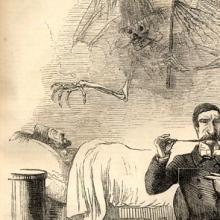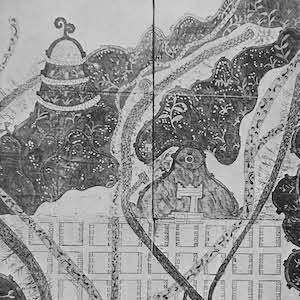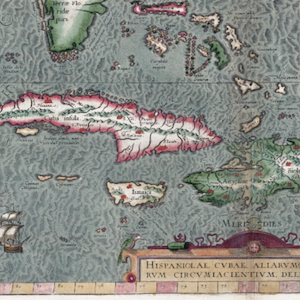Imperial/ Colonial

Short Teaching Module: Sick Men in Mid-Nineteenth-Century International Relations
I use political cartoons, newspaper stories, and excerpts from government documents to show different perspectives of a country’s power and foreign relations. I have several aims in using the texts.
New York Times editorial on Mexico, November 21, 1855
The New York Times was founded in 1851. It was an antislavery newspaper before the Civil War, helping to establish the Republican Party in 1854. It covered international as well as national and local affairs. Historians regard the Times as a gauge of American opinion at the time.

Mexico Cartoon, 1846
This cartoon was published in New York in June 1846 as a lithograph, a month after the United States declared war on Mexico on May 13, 1846 to begin the Mexican-American War, which resulted in U.S. annexation of Mexico’s northern territory.

Remains of the Puerta de la Ciudadela
The city of Montevideo, Uruguay, once belonged to the Viceroyalty of the Rio de la Plata, under the control of the Spanish Crown. It was officially founded in 1724. Around this time, the government constructed a wall around the city.

Ottoman Reform Decree, 1856
The Imperial Reform Edict of Ottoman Sultan Abdulmejid I, appearing originally in 1856 and subsequently in this 1874 publication, promised equality of access to education, government appointments, military service, and administration of justice to all, regardless of religion, language, or race.

Ottoman Decree Regarding Protestants, 1850
This imperial decree, or firman, was translated from Ottoman Turkish to English by the American Board of Commissioners for Foreign Missions.

Cartoon about the Ottoman Empire
This cartoon appeared in the popular British magazine Punch on September 15, 1853. In it, France is personified based on the mustachioed Emperor Napoleon III, and Britain appears as the symbolic figure John Bull.

Cast of the Hand of Brazilian Emperor Pedro II
Brazilian Emperor Pedro II ruled from 1831 – 1889. He was the last emperor in power before Brazil became a republic. This image captures two bronze hand molds taken of Pedro II’s right hand in the early nineteenth century.

Pueblo of Texupa
This is a copy of a relación geográfica.
